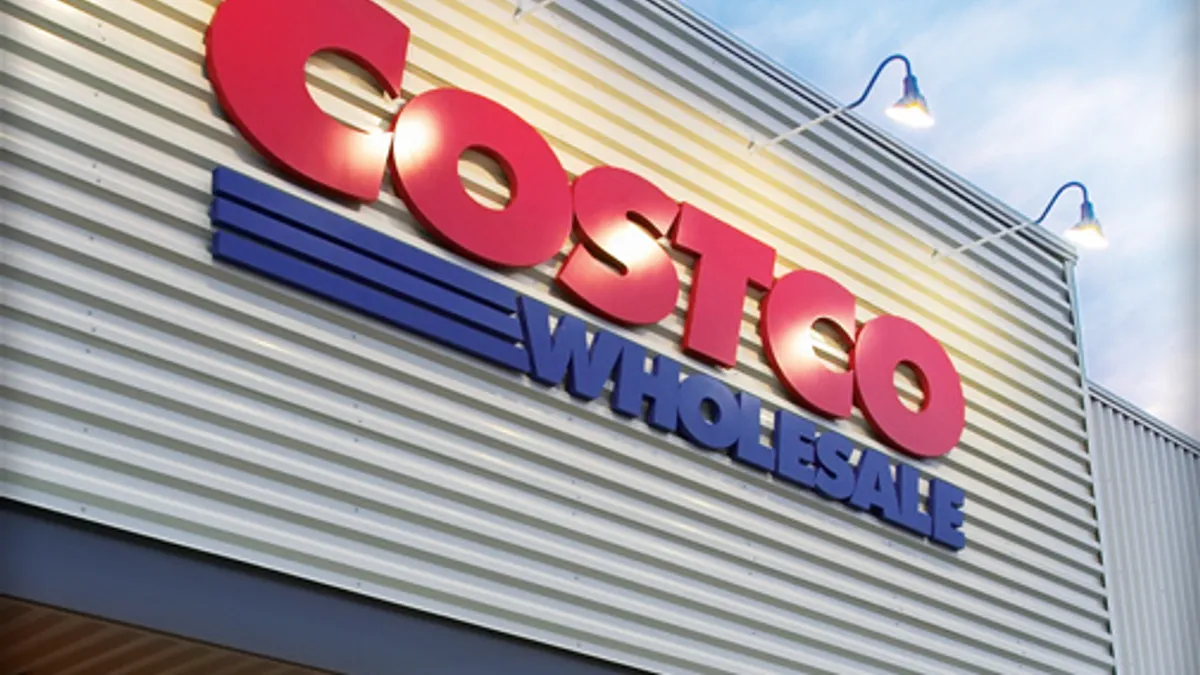Dive Brief:
-
Costco plans to eliminate its Polish hot dog and other yet-to-be-determined items at many stores around the Seattle area and beyond to make room for healthier fare, The Seattle Times reports.
- In an effort to reach health-conscious millennials, Costco began rolling out new vegan and vegetarian fare earlier this year. “Not everybody gets as excited about pizza and hot dogs as I do,” chief executive Craig Jelinek told company shareholders in January, noting that the food court menu is a frequent topic of comments dropped in store suggestion boxes, the Seattle Times reports. He touted nutritious options including acai fruit bowls, organic burgers (which began appearing in some stores last summer) and a plant-based protein salad – listed as an “Al Pastor Salad,” which is meatless.
- Despite moves to add healthful food choices, the hot dog combo is here to stay, officials promise. The $1.50 hot dog combo began about year-and-a-half after Costco opened its original store in downtown Seattle in 1983 – and store leaders say they would never eliminate the deal, which has come to symbolize the store’s ideology over the years. The price hasn’t even been adjusted for inflation; $1.50 in 1985 dollars is about $3.50 today, the newspaper notes. In a 2009 interview not long after the company made another hot dog change — from Sinai and Hebrew National Kosher dogs to Costco’s own private label — co-founder Jim Sinegal said a price increase would mean “that I’m dead.”
Dive Insight:
The Costco food court is a popular destination for shoppers looking for a snack or cheap meal after hiking the big box store’s aisles in search of bulk toilet paper and flat-screened TVs. And while crowds happily line up for a $1.99 slice of pizza or $1.50 hot dog combo, today’s young consumers are health conscious. According to the Organic Trade Association, 52% of organic consumers are millennials, and they eat 52% more vegetables than previous generations. This is a growing trend that food retailers cannot afford to ignore.
Younger consumers like to experiment with foods and beverages, and may pass on reheated pizza. Chances are they are more likely to stand in line for a $5 acai berry bowl or an affordable organic cheeseburger.
Other retailers have made similar adjustments to food court menus. A few years ago, Target began serving new and healthier café options in its food area, ditching hot dogs and cheese-covered nachos in favor of pressed juices, green salads and artisan pizza. These retailers are stepping up their game at a time when grocery stores also are adding restaurants and in-store eating areas to attract busy shoppers looking for a bite to eat. An example is the new Wegmans located in the upscale Natick Mall in Massachusetts: A two-story space with three restaurants and a second floor dedicated to fresh ready-made selections to attract customers on the go.
What’s more, Costco has shown in other ways it wants to compete with fast-food and fast-casual chains with the implementation of ordering kiosks in some stores. Panera Bread was an early adopter of the service, which has also been embraced by convenience stores Rutter’s Food, Wawa and QuikTrip. Smaller startups, including Philadelphia-based honeygrow, are using kiosk technology as a way to appeal to younger consumers and keep the busy lunch line moving. If Costco adopts the kiosk ordering system on a wider scale — along with providing healthier food options — it could make its food courts a preferred meal destination, particularly among millennials.
It’s too soon to tell whether healthy salads and vegetarian offerings at an attractive food court will be enough to lure millennials away from e-commerce to shop at a big box store, but the effort seems necessary, given today’s consumer preferences and crowded market.








